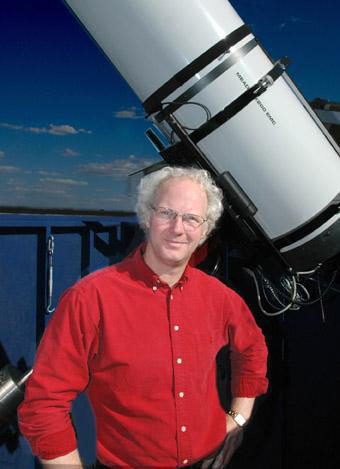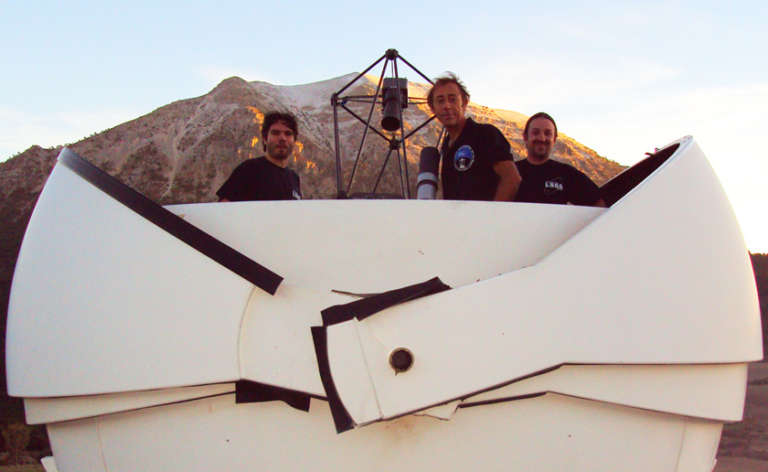Bruce Betts • Nov 20, 2010
The 2010 Gene Shoemaker NEO Grant Recipients
Congratulations to the 2010 Gene Shoemaker Near Earth Object Grant winners:
- Russell Durkee, Minnesota, USA;
- David Higgins, Australia;
- Robert Holmes, Illinois, USA;
- Herman Mikuž, Slovenia;
- Jaime Nomen, Spain; and
- Anthony Wesley, Australia.
The winners and their projects were selected from a group of 29 applications from workers in 15 countries on 5 continents.
Russell Durkee runs the Shed of Science Observatory (H39) in Minnesota, USA, which was founded in 2004 with the primary goal of measuring asteroid light curves. Asteroid light curves are graphs of an asteroid's brightness versus time. Light curves can reveal asteroids' rotation rates and can tell us if they are binary. Durkee's $5990 grant is for an SBIG ST10XE camera and filter wheel to be used with a new telescope he has acquired. The new telescope/camera system will also utilize the automation upgrades installed at the observatory using a previous Shoemaker NEO grant.
David Higgins operates the Hunters Hill Observatory (E14) in Canberra, Australia, where he runs an extremely productive asteroid light curve program. Higgins was the recipient of a 2005 Gene Shoemaker NEO grant that funded the purchase of a second-hand SBIG ST-8 CCD camera. That camera allowed for the automation of the Hunters Hill Observatory, resulting in photometric (brightness) observations of more than 400 targets and uncovering the binary nature of nearly 2 dozen asteroids. Higgins' $7695 grant will purchase a new SBIG STL-1001E C2 camera that will provide a much wider field of view and significantly faster image downloads. This award comes at propitious time, as Higgins' previous main camera has just suffered a significant hardware failure.

Robert Holmes is president of the Astronomical Research Institute (ARI) (H55) in Ashmore, Illinois, USA. In 2009, ARI made nearly 8,000 targeted observations of NEOs, more than any other observatory in the world. Holmes will extend ARI's already very productive research in NEO observations to physical studies of NEOs, utilizing a $1405 grant to purchase 4 filters in BVRI (blue, visible, red, infrared) and a clear filter for focusing. The filters will be used on 0.76- and 1.3- meter telescopes.

Jaime Nomen represents the La Sagra Observatory (J75) and the La Sagra Sky Survey (LSSS) on the Spanish island of Mallorca. One of the most prolific amateur observatories anywhere, La Sagra and the LSSS are finding that their current CCD camera provides a limited field of view and is not able to reach the faintest candidates found by larger survey telescopes. Their proposal for $7695 will fund the purchase of a new, larger-format SBIG STL-1001 CCD camera that will significantly reduce their image readout times.

Herman Mikuž operates the Črni Vrh Observatory (106) in Slovenia, representing a very competent team of NEO observers. Their fully robotic, over-the-Internet, program with a 60-centimeter telescope originated with the help of a 2000 Shoemaker grant and has grown to be the second most prolific amateur NEO survey, averaging multiple discoveries per year. They have discovered more than 500 asteroids and comets. They propose to overcome sensitivity limitations they are now reaching by using cameras with deep cooling to 60°C below ambient temperature. A grant of $8000 will substantially complement the funds Mikuž and team have raised to cover the approximately $15000 needed for the purchase of a deep-cooling Apogee Alta U9000 CCD camera.


Gene Shoemaker Near-Earth Object Grants
The Planetary Society's Shoemaker NEO grant program funds advanced amateur astronomers to find, track, and characterize potentially hazardous near-Earth objects.
Support our core enterprises
Your support powers our mission to explore worlds, find life, and defend Earth. You make all the difference when you make a gift. Give today!
Donate

 Explore Worlds
Explore Worlds Find Life
Find Life Defend Earth
Defend Earth



